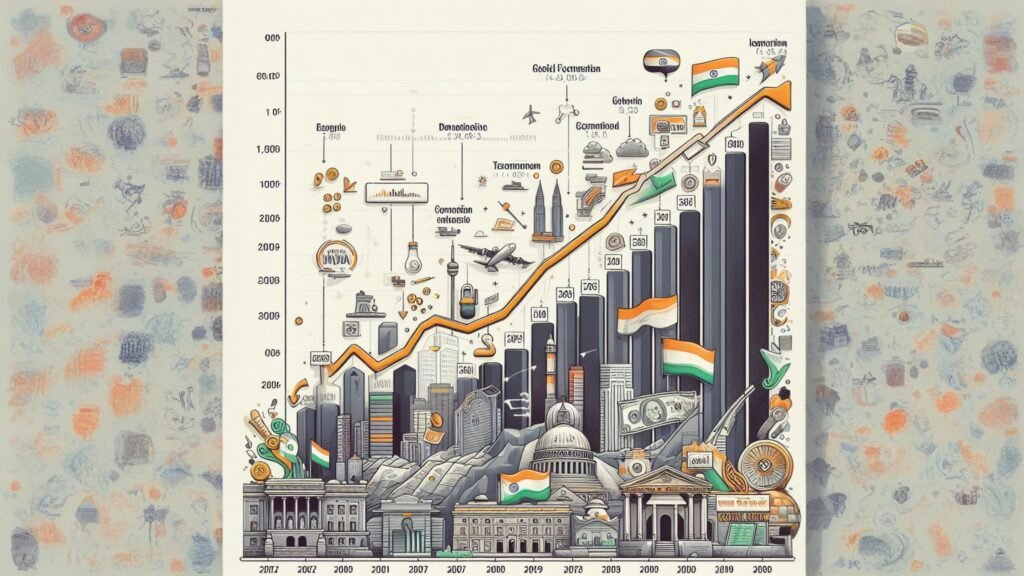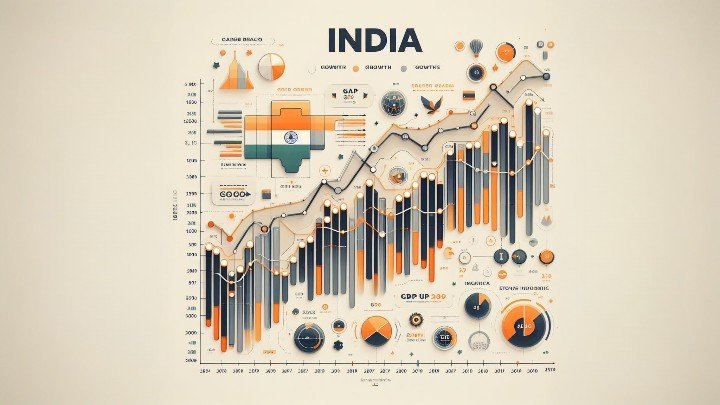In recent quarters, India’s economic landscape has been a subject of keen observation, particularly concerning its Gross Domestic Product (GDP) performance. The data from the third quarter of the fiscal year 2023-24 has sparked discussions, prompting economists to reassess their projections and outlooks for the Indian economy. Let’s delve into the intricacies of India’s GDP growth, exploring the factors driving the momentum and the implications for future trends.
India’s Q3 GDP growth figures exceeded expectations, registering an impressive expansion of 8.4% during the October-December period. This robust growth trajectory, sustained over multiple quarters, showcases the resilience of the Indian economy amidst global uncertainties and domestic challenges. The performance has not only surpassed projections but has also prompted upward revisions in GDP growth estimates for the fiscal year 2023-24.
The upward revision in the full-year GDP growth estimate from 7.3% to 7.6% underscores the underlying strength of India’s economic fundamentals. Strong private-sector investment coupled with a resurgence in services spending has been pivotal in driving the economic momentum. It’s noteworthy that the actual Q3 GDP growth surpassed even the projections by the Reserve Bank of India (RBI), which had estimated lower growth figures for the fiscal year.
Also Read: The Power Of Positive Thinking: How Optimism Can Transform Your Life
The divergence between GDP and Gross Value Added (GVA) growth, reflecting higher growth in government’s net indirect taxes, signifies dynamic shifts within the economy. Despite a slight moderation in GVA growth in the October-December quarter, the overall GDP trajectory remains robust. The nominal GDP growth, while slightly higher than initial estimates, indicates underlying trends in economic output and value creation.
Looking ahead, economists are revising their growth projections for FY25, buoyed by the strong performance in Q3. Projections suggest a continuation of positive momentum, with estimates ranging from 6.6% to 7% for real GDP growth in the upcoming fiscal year. Factors such as sustained private consumption, gradual recovery in investment, and improvement in exports are expected to drive economic expansion.

The role of government policies and interventions remains critical in shaping the trajectory of India’s economic growth. While fiscal stimulus measures have supported recovery efforts, there’s a need for continued policy support to address structural bottlenecks and enhance business confidence. Moreover, global economic dynamics, including monetary policies and trade patterns, will influence India’s growth outlook in the coming years.
It’s imperative to address challenges within specific sectors, particularly the farm sector, which witnessed a contraction in GVA growth during Q3. However, forecasts indicate a potential recovery in the upcoming fiscal year, driven by industrial growth and key sectors such as construction, manufacturing, and mining. A balanced approach encompassing agricultural reforms and investment incentives could bolster sectoral resilience.
The sustainability of India’s growth trajectory hinges on several factors, including the pace of structural reforms, infrastructure development, and technology adoption. Strengthening the ease of doing business, fostering innovation, and enhancing productivity are essential for long-term economic resilience. Moreover, inclusive growth strategies aimed at addressing income disparities and promoting social welfare will contribute to a more sustainable and equitable economic future.
Also Read: The Latest Innovations In Store Goo: Revolutionizing The Retail Industry
As India navigates through evolving global dynamics and domestic imperatives, the resilience demonstrated in its GDP growth trajectory underscores the nation’s potential as a key player in the global economy. Strategic policy interventions. Coupled with proactive measures to harness demographic dividends and foster innovation, will be instrumental in unlocking India’s growth potential and shaping its economic destiny.
In conclusion, India’s GDP growth trajectory reflects a story of resilience, adaptability, and potential. While challenges persist, the underlying fundamentals remain strong, offering opportunities for sustained economic expansion. With the right mix of policy measures, investments, and reforms, India can chart a path towards inclusive and sustainable growth. Positioning itself as a beacon of economic dynamism on the global stage.










